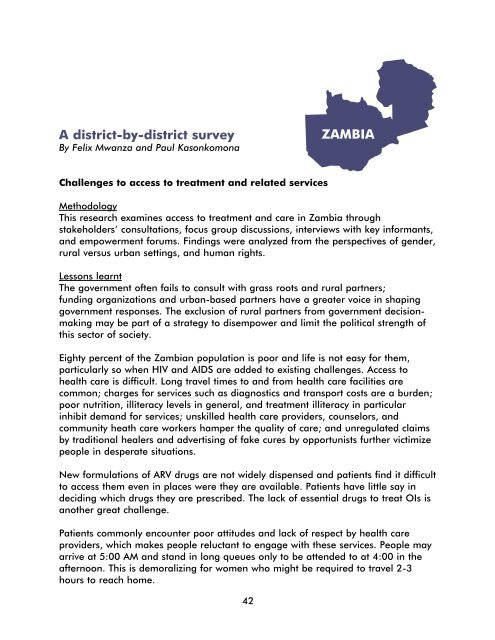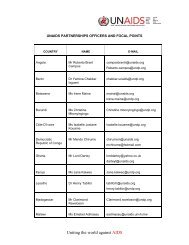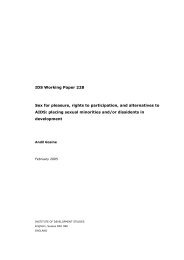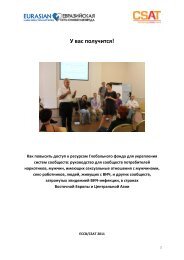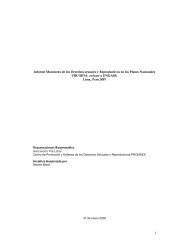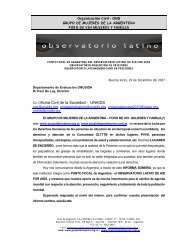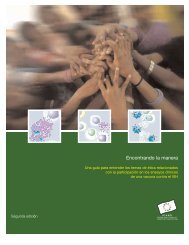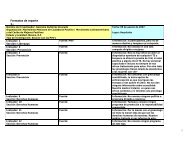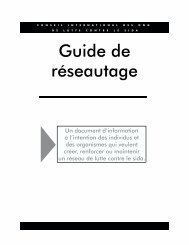Missing the Target #5: Improving AIDS Drug Access ... - CD8 T cells
Missing the Target #5: Improving AIDS Drug Access ... - CD8 T cells
Missing the Target #5: Improving AIDS Drug Access ... - CD8 T cells
You also want an ePaper? Increase the reach of your titles
YUMPU automatically turns print PDFs into web optimized ePapers that Google loves.
A district-by-district surveyBy Felix Mwanza and Paul KasonkomonaChallenges to access to treatment and related servicesMethodologyThis research examines access to treatment and care in Zambia throughstakeholders’ consultations, focus group discussions, interviews with key informants,and empowerment forums. Findings were analyzed from <strong>the</strong> perspectives of gender,rural versus urban settings, and human rights.Lessons learntThe government often fails to consult with grass roots and rural partners;funding organizations and urban-based partners have a greater voice in shapinggovernment responses. The exclusion of rural partners from government decisionmakingmay be part of a strategy to disempower and limit <strong>the</strong> political strength ofthis sector of society.Eighty percent of <strong>the</strong> Zambian population is poor and life is not easy for <strong>the</strong>m,particularly so when HIV and <strong>AIDS</strong> are added to existing challenges. <strong>Access</strong> tohealth care is difficult. Long travel times to and from health care facilities arecommon; charges for services such as diagnostics and transport costs are a burden;poor nutrition, illiteracy levels in general, and treatment illiteracy in particularinhibit demand for services; unskilled health care providers, counselors, andcommunity heath care workers hamper <strong>the</strong> quality of care; and unregulated claimsby traditional healers and advertising of fake cures by opportunists fur<strong>the</strong>r victimizepeople in desperate situations.New formulations of ARV drugs are not widely dispensed and patients find it difficultto access <strong>the</strong>m even in places were <strong>the</strong>y are available. Patients have little say indeciding which drugs <strong>the</strong>y are prescribed. The lack of essential drugs to treat OIs isano<strong>the</strong>r great challenge.Patients commonly encounter poor attitudes and lack of respect by health careproviders, which makes people reluctant to engage with <strong>the</strong>se services. People mayarrive at 5:00 AM and stand in long queues only to be attended to at 4:00 in <strong>the</strong>afternoon. This is demoralizing for women who might be required to travel 2-3hours to reach home.42


